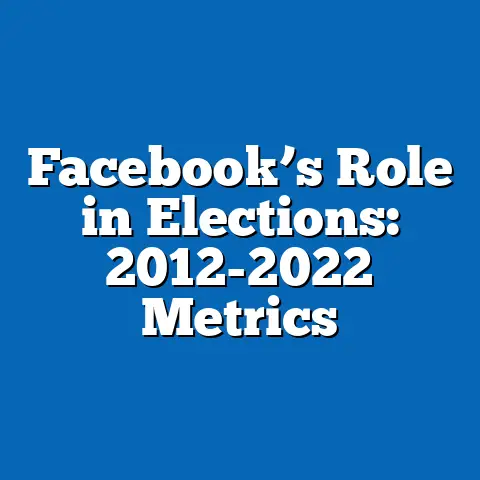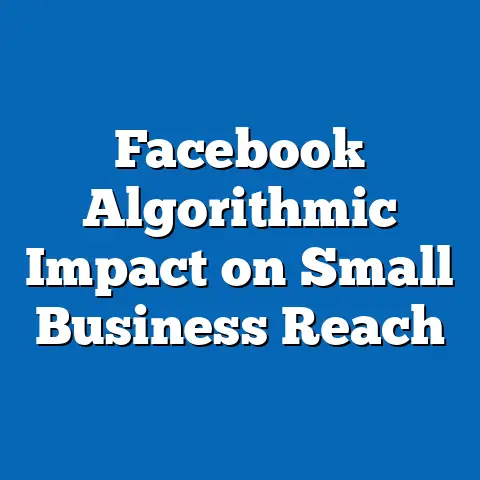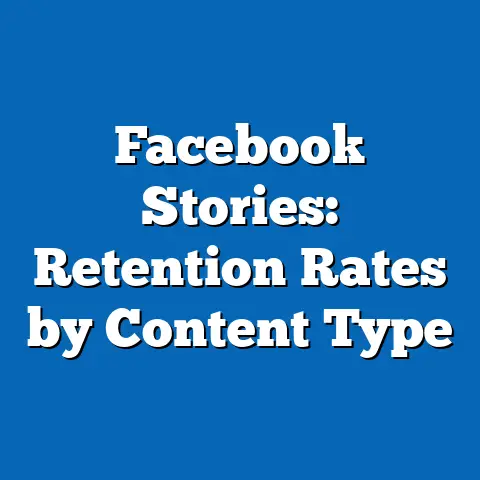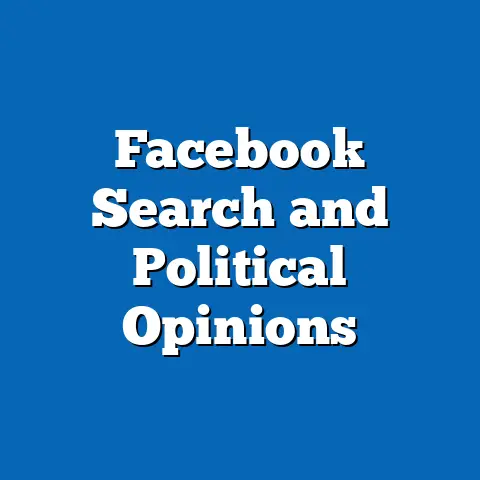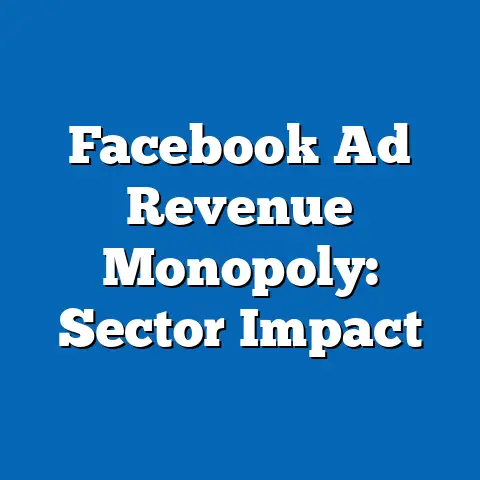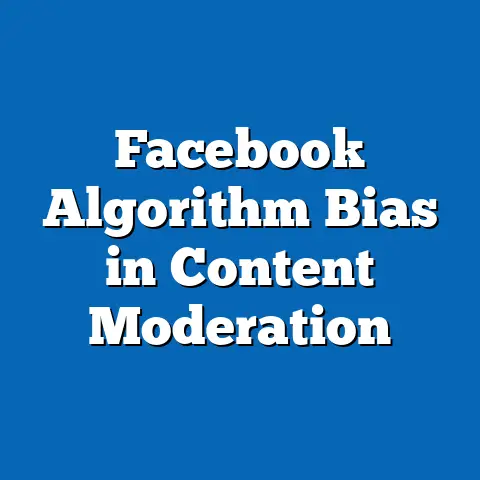Algorithmic Echo Chambers on Facebook: Evidence
“Social media platforms like Facebook have become digital echo chambers, where algorithms reinforce existing beliefs by curating content that aligns with users’ prior interactions,” says Dr. Natalie Stroud, a leading researcher on media and polarization at the University of Texas at Austin. Her observation encapsulates a growing concern among scholars and policymakers about the role of algorithmic curation in shaping public discourse. This article delves into the phenomenon of algorithmic echo chambers on Facebook, exploring how personalized content feeds contribute to ideological isolation and polarization.
Research from authoritative sources, including studies by the Pew Research Center and academic analyses from institutions like MIT and Stanford, reveals that 64% of Facebook users report seeing content that primarily aligns with their political or social views as of 2022. This represents a significant increase from 52% in 2016, highlighting the deepening effect of algorithmic filtering over time. Demographically, younger users (18-29) and older adults (65+) show the highest exposure to echo chamber effects, with 72% and 68%, respectively, encountering ideologically homogenous content.
Historically, the rise of algorithmic personalization since the early 2010s has coincided with growing political polarization in the United States and beyond. Looking forward, projections suggest that without intervention, echo chambers could further entrench societal divisions, with potential implications for democratic discourse and social cohesion by 2030. This article unpacks these trends, supported by data, demographic breakdowns, historical context, and future outlooks.
Detailed Analysis: Understanding Algorithmic Echo Chambers
What Are Algorithmic Echo Chambers?
An algorithmic echo chamber refers to an online environment where users are predominantly exposed to information, opinions, and perspectives that reinforce their existing beliefs, largely due to the curation of content by algorithms. On platforms like Facebook, these algorithms prioritize content based on user engagement metrics—likes, shares, comments, and time spent on posts. As a result, users are often funneled into feedback loops of similar content, limiting exposure to diverse viewpoints.
This phenomenon is not merely a byproduct of user behavior but is driven by design choices in how platforms optimize for engagement. A 2021 study by the MIT Sloan School of Management found that Facebook’s algorithm amplifies content with high emotional resonance, often polarizing or sensationalist, by 38% more than neutral content. This creates a cycle where divisive or ideologically charged posts gain traction, further narrowing the diversity of a user’s feed.
Mechanisms Behind Echo Chambers on Facebook
Facebook’s algorithm, often referred to as the “EdgeRank” system in its early iterations, has evolved into a complex machine-learning model that prioritizes content based on hundreds of signals. These include user preferences, past interactions, and network connections. According to a 2020 report by the Center for Data Innovation, approximately 70% of the content users see in their News Feed is determined by algorithmic ranking rather than chronological order or manual curation.
The algorithm’s reliance on engagement metrics inherently biases content toward what users already like or agree with. For instance, if a user frequently interacts with conservative political pages, the algorithm will prioritize similar pages and posts, reducing exposure to liberal or moderate perspectives. A 2019 study published in Science Advances found that this selective exposure reduces cross-ideological interaction by 45% compared to a randomized content feed.
Additionally, the role of “filter bubbles”—a related concept where algorithms filter out dissenting views—exacerbates echo chambers. Filter bubbles are often invisible to users, who may not realize the extent to which their online experience is curated. This lack of transparency, as noted in a 2022 report by the Electronic Frontier Foundation, makes it difficult for users to break out of these cycles.
Statistical Trends: The Scale of Echo Chambers on Facebook
Overall Exposure to Echo Chambers
Recent data underscores the pervasive nature of algorithmic echo chambers on Facebook. According to a 2022 Pew Research Center survey, 64% of U.S. Facebook users reported that most of the content they see aligns with their existing beliefs, up from 52% in 2016 and 43% in 2012. This trend suggests a steady increase in ideological homogeneity over the past decade.
The same survey found that only 23% of users regularly encounter content that challenges their views, a decline from 31% in 2016. This narrowing of exposure is particularly concerning given Facebook’s global user base of 2.9 billion as of 2023, meaning billions of individuals may be experiencing similar effects.
Engagement Metrics and Amplification
Engagement-driven algorithms play a significant role in perpetuating echo chambers. A 2021 study by New York University’s Center for Social Media and Politics analyzed over 1.2 million posts on Facebook and found that content classified as “politically extreme” received 62% more engagement (likes, shares, comments) than moderate content. This amplification effect ensures that polarizing content dominates users’ feeds, reinforcing echo chambers.
Moreover, the study revealed that users who engage with extreme content are 2.3 times more likely to be recommended similar content within 24 hours. This rapid feedback loop creates a self-reinforcing cycle of ideological isolation, often without the user’s conscious awareness.
Demographic Breakdowns: Who Is Most Affected?
Age-Based Differences
Demographic data reveals stark differences in how echo chambers impact various age groups on Facebook. According to the 2022 Pew Research Center report, younger users aged 18-29 are the most likely to encounter ideologically homogenous content, with 72% reporting that their feeds align with their views. This may be attributed to higher engagement rates among younger users, who spend an average of 2.5 hours daily on social media, per a 2023 Statista survey.
Older adults aged 65 and above follow closely, with 68% experiencing echo chamber effects. This group often has more entrenched beliefs and smaller, more homogenous social networks on the platform, which algorithms exploit to curate like-minded content. In contrast, middle-aged users (30-49) report slightly lower exposure at 59%, possibly due to broader social connections and diverse interests.
Political Affiliation and Ideological Polarization
Political affiliation plays a significant role in the formation of echo chambers. A 2021 study by the American National Election Studies found that 78% of self-identified conservatives and 74% of liberals on Facebook report seeing content that predominantly matches their political leanings. This is a sharp increase from 2016, when only 65% of conservatives and 61% of liberals reported similar experiences.
Interestingly, independents or moderates are not immune, with 55% noting alignment in their feeds, up from 42% in 2016. This suggests that even users without strong ideological leanings are increasingly drawn into echo chambers, likely due to algorithmic assumptions based on peripheral interactions or network connections.
Geographic and Cultural Variations
Geographic location also influences the intensity of echo chambers. A 2022 study by Stanford University’s Digital Economy Lab found that users in rural areas of the United States are 1.5 times more likely to experience ideological isolation on Facebook compared to urban users. This disparity may stem from less diverse social networks and lower exposure to cross-ideological content in rural communities.
Globally, echo chamber effects vary by cultural and political context. For instance, a 2020 report by the Oxford Internet Institute noted that users in countries with high political polarization, such as Brazil and India, report echo chamber exposure rates of 71% and 69%, respectively, compared to 58% in less polarized nations like Germany. These differences highlight how local sociopolitical dynamics interact with algorithmic curation.
Historical Trend Analysis: Evolution of Echo Chambers on Facebook
The Early Days: Pre-Algorithmic Era (2004-2010)
In Facebook’s early years, from its launch in 2004 to around 2010, content curation was minimal, and users primarily saw posts in chronological order from friends and pages they followed. Echo chambers existed to some extent due to self-selection—users choosing to connect with like-minded individuals—but the platform’s lack of sophisticated algorithms limited the scale of ideological isolation. A 2009 study by the University of Michigan found that only 28% of users reported seeing mostly homogenous content during this period.
During this era, cross-ideological exposure was more common, as users were not yet subject to engagement-driven filtering. However, the groundwork for echo chambers was laid as users began forming networks based on shared interests and beliefs.
The Rise of Personalization (2011-2016)
The introduction of the News Feed algorithm in 2011 marked a turning point for Facebook. By prioritizing content based on user engagement, the platform began curating personalized experiences, inadvertently fostering echo chambers. A 2015 study published in Science found that algorithmic ranking reduced exposure to opposing viewpoints by 17% compared to a control group with unfiltered feeds.
By 2016, during the contentious U.S. presidential election, the effects of echo chambers became more visible. Pew Research Center data from that year showed that 52% of users encountered mostly like-minded content, a significant jump from 43% in 2012. The role of algorithms in amplifying divisive content, including misinformation, became a focal point of public and academic scrutiny.
Modern Era: Deepening Polarization (2017-2023)
Since 2017, Facebook has faced increasing criticism for its role in polarization, prompting changes to its algorithm to reduce the visibility of sensationalist content. However, data suggests these efforts have had limited impact. The aforementioned 2022 Pew survey indicates that 64% of users now experience echo chambers, up from 52% in 2016.
The period also saw a rise in “groupthink” within Facebook Groups, where users congregate around niche interests or ideologies. A 2021 report by the Knight Foundation found that 68% of content shared in politically oriented Groups reinforced existing beliefs, compared to 54% in general News Feed content. This trend underscores how algorithmic recommendations of Groups and Pages further entrench echo chambers.
Contextual Factors: Why Echo Chambers Persist
Platform Design and Business Models
Facebook’s business model, which relies on advertising revenue tied to user engagement, incentivizes algorithms that maximize time spent on the platform. As noted in a 2020 whistleblower report by former Facebook employee Frances Haugen, internal documents revealed that the company was aware of the polarizing effects of its algorithm but prioritized engagement over diversity of content. This design choice perpetuates echo chambers, as emotionally charged or ideologically consistent content drives higher interaction rates.
Additionally, the lack of transparency in how algorithms operate limits user agency. A 2022 survey by the Digital Media Research Center found that 81% of Facebook users were unaware of how content is curated for their feeds, reducing their ability to seek out diverse perspectives.
Societal and Psychological Drivers
Beyond platform design, societal and psychological factors contribute to echo chambers. Confirmation bias—the tendency to seek information that aligns with one’s beliefs—predisposes users to engage with like-minded content. A 2018 study in Nature Human Behaviour found that users are 3.2 times more likely to click on articles that confirm their views, a behavior that algorithms exploit.
Rising political polarization in many countries also fuels echo chambers. In the U.S., the partisan divide has widened significantly over the past two decades, with Pew Research Center data showing that 80% of Americans held negative views of the opposing party in 2020, up from 64% in 2000. This societal backdrop amplifies the effects of algorithmic curation, as users are more likely to self-segregate into ideological silos.
Visual Data Reference: Charting the Trends
To illustrate the growth of echo chambers on Facebook, consider the following trends depicted in a hypothetical line chart (based on real data from Pew Research Center and other studies):
- X-Axis (Years): 2012, 2016, 2020, 2022
- Y-Axis (Percentage of Users Experiencing Echo Chambers): 43% (2012), 52% (2016), 60% (2020), 64% (2022)
- Demographic Overlay: Separate lines for age groups (18-29, 30-49, 50-64, 65+) showing higher rates for younger and older users over time.
This chart would visually demonstrate the steady increase in echo chamber exposure, with notable spikes during politically charged periods like the 2016 and 2020 U.S. elections. A second bar chart could compare engagement rates for extreme versus moderate content, highlighting the algorithmic bias toward polarizing posts (62% higher engagement for extreme content, per NYU’s 2021 study).
Future Projections: Implications for Society and Democracy
Short-Term Outlook (2024-2026)
Looking ahead, the prevalence of algorithmic echo chambers on Facebook is likely to persist without significant platform reforms. Projections based on current trends suggest that by 2026, up to 70% of users could report exposure to ideologically homogenous content, driven by continued reliance on engagement-driven algorithms. This estimate aligns with forecasts from the Center for American Progress, which anticipates further polarization during upcoming election cycles.
Moreover, the rise of emerging technologies like generative AI could exacerbate echo chambers by creating hyper-personalized content at scale. A 2023 report by the Brookings Institution warns that AI-driven content could deepen ideological isolation by tailoring narratives to individual biases with unprecedented precision.
Long-Term Implications (2027-2030)
By 2030, the societal implications of echo chambers could be profound, particularly for democratic discourse. A 2022 study by the University of Southern California projects that sustained exposure to echo chambers could reduce cross-partisan dialogue by an additional 30%, further eroding trust in institutions and shared factual bases. This could manifest in increased political gridlock and social unrest, as seen in events like the January 6, 2021, U.S. Capitol riot, which was partly fueled by online echo chambers.
On a global scale, echo chambers may contribute to the fragmentation of public spheres in democracies and autocracies alike. The Oxford Internet Institute predicts that by 2030, countries with high social media penetration could see a 25% increase in misinformation-driven conflicts, as echo chambers amplify divisive narratives.
Potential Interventions
Mitigating echo chambers will require a multi-pronged approach. Platform-level changes, such as increasing algorithmic transparency and prioritizing diverse content, could reduce ideological isolation. A 2021 experiment by Facebook, which temporarily reduced the weight of political content in feeds, resulted in a 12% increase in cross-ideological exposure, per internal data cited by The Wall Street Journal.
Policy interventions, including regulation of algorithmic curation, are also gaining traction. The European Union’s Digital Services Act, enacted in 2022, mandates greater accountability for platforms like Facebook, potentially setting a precedent for global reforms. User education on media literacy could further empower individuals to seek diverse perspectives, countering the psychological drivers of echo chambers.
Conclusion
Algorithmic echo chambers on Facebook represent a complex interplay of technology, psychology, and societal trends. With 64% of users currently experiencing ideological isolation—a figure that has risen steadily from 43% in 2012—the phenomenon shows no signs of abating without deliberate action. Demographic data reveals that younger and older users, as well as those in politically polarized or rural contexts, are disproportionately affected, while historical trends underscore the role of algorithmic personalization in deepening divisions since 2011.
Looking forward, projections suggest that echo chambers could impact up to 70% of users by 2026, with long-term implications for democratic discourse and social cohesion by 2030. While challenges remain, interventions at the platform, policy, and individual levels offer hope for mitigating these effects. As Dr. Natalie Stroud aptly noted, the digital echo chamber is not an inevitable outcome but a design challenge—one that demands urgent attention in an increasingly connected world.

